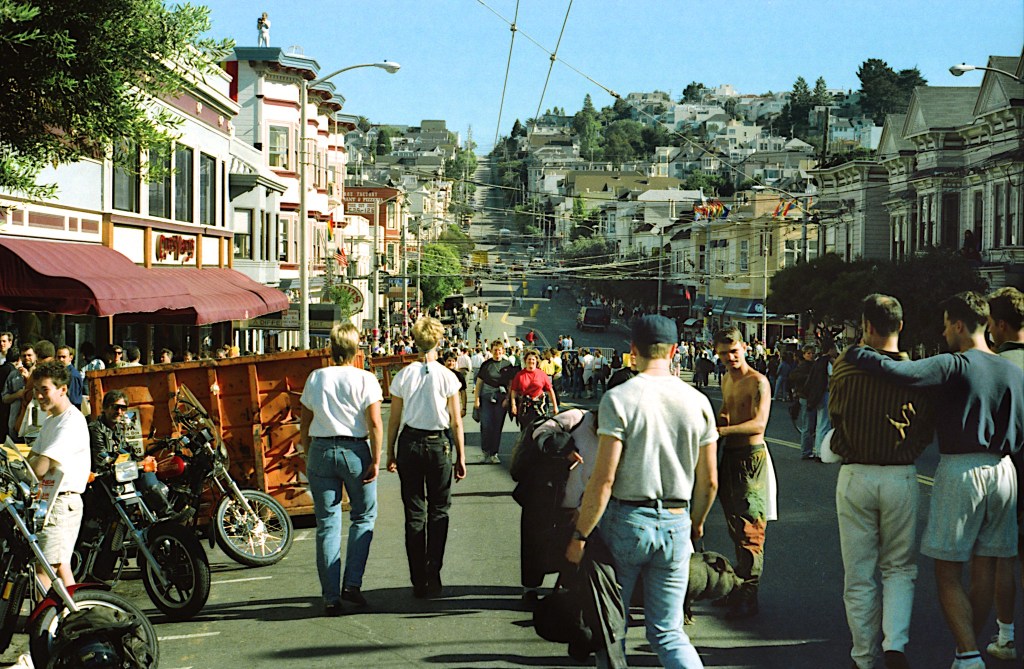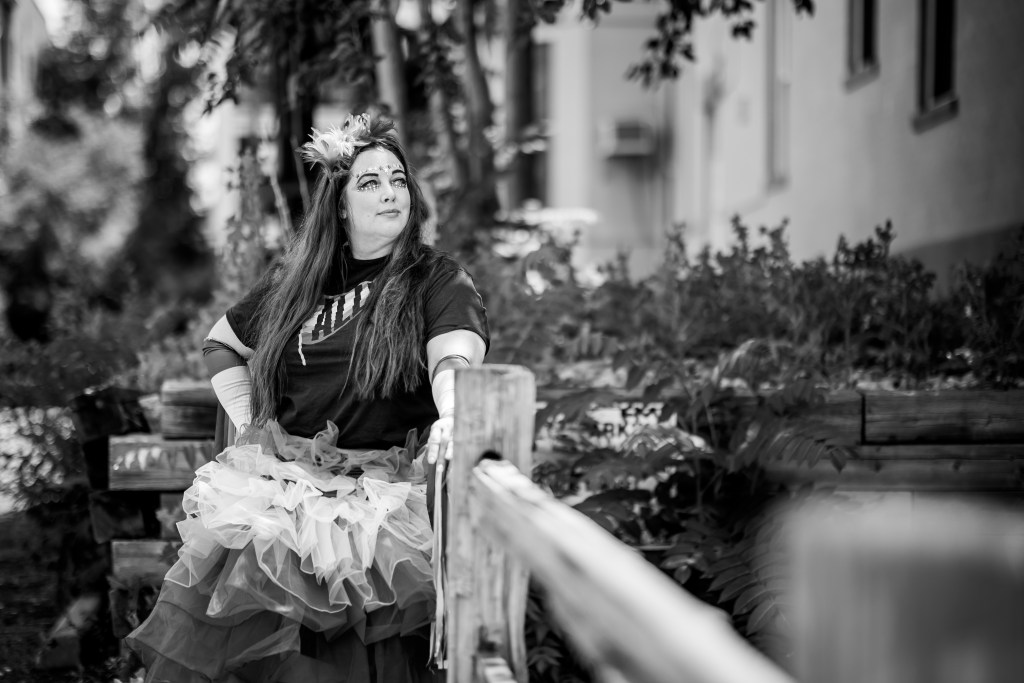Celebrating the Queer History of Cannabis Culture in Pride Month, and All Throughout the Year


As cannabis businesses roll out their Pride Month ad campaigns and sponsorships this June, it might look like just another case of rainbow-washing. After all, companies from all sorts of industries—from fast fashion to food and beverage giants to financial companies—have tried to capitalize on allyship with the queer community, with varying degrees of authenticity.
But the ties between the cannabis industry and the LGBTQIA+ community go far deeper than rainbow-colored rolling papers or a fresh bowl of Banana Hammock. In fact, we might not have legal medical cannabis in a vast majority of the United States if it weren’t for the work of gay and lesbian activists over the past 50 years.
HOW LGBTQIA+ ACTIVISTS AGITATED FOR MEDICAL CANNABIS
Missing from much of the discourse about diversity and inclusion in cannabis is the role that LGBTQIA+ activists have played in ending prohibition. Just a year after the 1969 Stonewall Riots, which Pride Month commemorates, the United States outlawed cannabis via the Controlled Substances Act.
In 1976, however, a straight man named Robert C. Randall became the first legal medical cannabis patient in the country post-federal prohibition when he successfully won the right to use cannabis to treat his glaucoma. The case directly contributed to setting a precedent for classifying cannabis as a Compassionate IND, or what the U.S. Food and Drug Administration terms the “compassionate use of [an] investigational new drug.” That Compassionate IND designation for medical cannabis would come to the fore just a few years later when a new health crisis emerged in the 1980s—the rise of a deadly disease later identified as human immunodeficiency virus (HIV / AIDS).
As the political and medical establishment turned their backs on the epidemic first identified among gay men, the queer community and its allies developed their own compensatory networks of care, including the distribution of medical cannabis. Smokables and edibles were used to treat everything from HIV symptoms themselves to the side effects of azidothymidine, better known as AZT—an HIV-AIDS medication that was also classified as a Compassionate IND, just like cannabis.

EARLY MEDICAL CANNABIS PIONEERS
Many of those pioneers who established care networks and made medical cannabis not only legal but accessible were based in San Francisco, one of the most prominent centers of queer culture in the country. Dennis Peron, for example, is sometimes called “the godfather of medical marijuana.” He spent years selling cannabis underground in the Castro District and connecting AIDS patients with medical cannabis, including his late partner, Jonathan West. Later, he went on to found San Francisco’s first public dispensary in the early 1990s and co-authored California’s historic ballot initiative Proposition 215 for medical cannabis use. Prop 215 co-author and San Francisco denizen Mary Jane Rathbun earned the nickname “Brownie Mary” for her clandestine distribution of thousands of infused edibles to those living with HIV and AIDS.
Queer activists led the way in other major California cities, too. Scott Imler, a Methodist pastor and another Prop 215 co-author, opened the Los Angeles Cannabis Resource Cooperative, which was the first dispensary in LA County. Los Angeles Black Gay Pride Association founder Paul Scott also served as an early board member of the Oakland Cannabis Buyers Club and founded the first medical cannabis dispensary in Inglewood.
Couple Michael Koehn and David Goldman also became involved in cannabis advocacy in San Francisco during the AIDS crisis, inspired by Rathbun’s work. They have continued to serve as medical cannabis advocates through the Brownie Mary Democratic Club as well as San Francisco’s Medical Cannabis Task Force.
“The genesis of the cannabis movement, gay people served at the heart of it,” Koehn told the The Orange County Register in 2021. Today, Koehn and Goldman are an all-too-rare pair of gay elders who survived the AIDS crisis and have seen plant medicine become legally available across the country, starting with California in 1996.
LGBTQIA+ FRIENDLY MARKETING FOR CANNABIS COMPANIES YEAR ROUND
Some early advocates for legal cannabis have been honored with namesake strains, from Jack Herer to Ed Rosenthal and Michka Seelinger-Chatelain. But many of the LGBTQIA+ advocates who helped pave the way for legal cannabis aren’t exactly household names, even in cannabis-friendly circles.
While there isn’t a hot-selling line of official Brownie Mary edibles or Peron-branded pinners (yet), the queer community continues to influence and intersect with cannabis culture in ways large and small. From drag queens like La Ganja Estranja and YouTube personality The Gay Stoner to the Queer Cannabis Club debut at Aspen Gay Ski Week in 2022 and the founding of publications dedicated to queer cannabis culture like Buds Digest, cannabis has never been so openly queer.
More and more companies are embracing implicit or explicitly queer branding like Cann, Sonder, Rythm and Kush Queen (the latter even makes Pride-branded CBD lube). Even more are proudly embracing their LGBTQIA+ team members, from Drew Martin and Madame Munchie to Peak Extracts and Boulder Creek Technologies. Still, the cannabis industry can always do more to honor its queer legacy.
Authentic PR narratives and strategic partnerships are a prime opportunity to celebrate Pride throughout the year and educate new consumers about the role LGBTQIA+ activists continue to play in the fight for federal legalization. San Francisco’s Apothecarium dispensary, for example, proudly features an art gallery dedicated to Mark Estes, one of the victims of the AIDS epidemic who was well known in the Castro in the 1990s. Others like The People’s Dispensary, which operates in California, New Mexico and Illinois, have an explicit mission to create a safe and inclusive space not only for queer cannabis consumers, but also BIPOC and other marginalized groups.

Even if a cannabis company isn’t queer-owned or explicitly LGBTQIA+ branded, there are other ways to signal allyship. When in doubt, follow the lead of queer cannabis brands, whether it’s donating a portion of proceeds to organizations which offer support to the queer and trans communities, emphasizing intersectionality or accessibility in messaging, as well as featuring diverse models and inclusive language in collateral.
Don’t be afraid to celebrate the individual identities of your team members (if everyone involved consents) or promote community events, like parades and fundraisers, in line with your brand’s values. Speak to your customers as they speak to one another and acknowledge what priorities they share with your brand.
After all, stoner stereotypes—often rooted in white, male, heterosexual humor—are becoming more and more things of the past. As more people try cannabis for the first time or reconnect with weed after years or decades, the number and diversity of people who want to see themselves reflected in this space expands, too. It’s time to bring queer cannabis culture out of the closet and give this overlooked, underground history its due.

A proud Colorado native and one of Denver Business Journal’s Most Admired CEOs, Ricardo Baca is a serial entrepreneur, three-time Marketer of the Year, 24-year veteran journalist, two-time TEDx speaker, and drug policy architect.
Ricardo launched Clio-winning PR and marketing firm Grasslands: A Journalism-Minded Agency® in 2016 to super-charge businesses throughout the U.S., Latin America and Europe. Grasslands was awarded a Clio Award for its public relations program, two Emjays Awards for Public Relations Agency of the Year, and a Small Business Award from the Denver Business Journal.
In 2023, Colorado Gov. Jared Polis appointed Ricardo to the state’s first-ever Natural Medicine Advisory Board to contribute to policy development around the state’s psychedelics framework. In 2025, Ricardo launched Buy Colorado Day in partnership with the State Legislature, creating a new holiday—and powerful economic driver—that celebrates innovative Colorado brands of all kinds via consumers all over the world.
Capping off a wide-spanning career in journalism, Ricardo made international headlines as The Denver Post’s first-ever Cannabis Editor in 2013, as seen in the feature-length documentary film Rolling Papers. Numerous accolades followed, including Ricardo being named one of Fortune magazine’s 7 Most Powerful People in America’s Marijuana Industry, one of Brookings Institution's 12 Key People to Watch in Marijuana Policy, and one of Time magazine’s 140 best Twitter feeds.
In 2022, Ricardo co-founded Colorado fine art biennial Biome with the mission of celebrating fine art via community, inclusivity and biennial exhibition. Before that, Ricardo co-founded Denver music festival The Underground Music Showcase, which celebrates its 25th anniversary in 2025.
Ricardo is proud to sit on the Board of Directors for Colorado Public Radio, where he serves as Treasurer, and on the Board of Advisors for the reMind Psychedelics Business Forum.
A regular speaker at SXSW, Ricardo still contributes columns and op-eds to top publications, including Rolling Stone, Nosh, the New Hope Network and MJBizDaily. He has also been interviewed by The New York Times, The View, The New Yorker, This Week With George Stephanopoulos, The Colbert Report and NPR’s All Things Considered.
Ricardo lives in Denver with his wife, two dogs and two cats.
